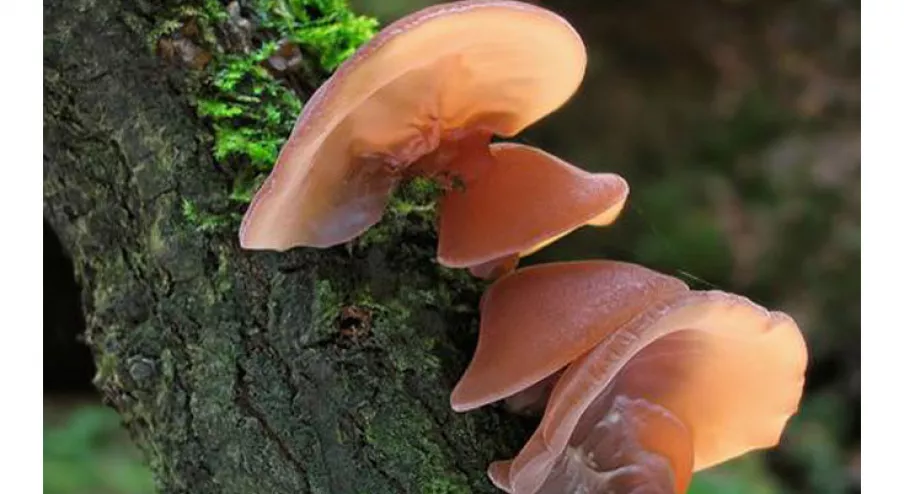Tin tức
Wood Ear Mushroom: A Nutrient-Packed Ingredient in Traditional and Modern Dishes
Wood Ear Mushroom is a nutrient-rich and versatile ingredient commonly used in Asian cuisine. This article explores the health benefits, preparation methods, and creative uses of Wood Ear Mushroom in both traditional and modern dishes. We also examine how it compares to other types of mushrooms and its sustainable advantages in promoting eco-friendly diets.

Contents
- 1 Introduction to Wood Ear Mushroom
- 2 Health Benefits of Wood Ear Mushroom
- 3 How to Prepare and Cook Wood Ear Mushroom
- 4 Wood Ear Mushroom in Asian Cuisine
- 5 Comparing Wood Ear Mushroom with Other Types of Mushrooms
- 6 How to Store and Preserve Wood Ear Mushroom
- 7 Sustainable Benefits of Using Wood Ear Mushroom
Introduction to Wood Ear Mushroom
Wood Ear Mushroom (Auricularia auricula-judae), also known as black fungus or cloud ear mushroom, is a widely used ingredient in Asian cuisine. Known for its mild flavor and crunchy texture, this mushroom is highly versatile and can be used in a variety of dishes, from soups and stir-fries to salads and appetizers. It is especially popular in Chinese and Vietnamese cooking.
In addition to its culinary appeal, Wood Ear Mushroom is packed with nutrients and offers numerous health benefits. This article will take a closer look at how Wood Ear Mushroom can enhance your diet, how to prepare and cook it, and why it stands out as a sustainable food choice.

Health Benefits of Wood Ear Mushroom
Wood Ear Mushroom is not just a delicious ingredient; it is also incredibly nutritious, offering a range of health benefits.
Nutritional Value
Wood Ear Mushroom is rich in essential nutrients, including fiber, iron, and various vitamins such as vitamin B2 and B3 (riboflavin and niacin). Its high fiber content helps support digestive health, while the iron content plays a key role in maintaining healthy blood cells. The mushroom is also low in calories, making it a great addition to weight-conscious diets.
Overall Health Benefits
Adding Wood Ear Mushroom to your diet can provide several health benefits, such as improving digestion due to its fiber content. Additionally, the mushroom is known for its ability to lower cholesterol levels, thus supporting cardiovascular health. It also contains polysaccharides, compounds known for boosting immune function and offering anti-inflammatory effects.
Cardiovascular Health
The fiber in Wood Ear Mushroom is particularly beneficial for heart health. By helping to lower cholesterol, this mushroom may reduce the risk of heart disease. Its antioxidant properties also contribute to overall well-being, helping to protect the body from oxidative stress, which can lead to chronic illnesses.

How to Prepare and Cook Wood Ear Mushroom
Properly preparing and cooking Wood Ear Mushroom is essential to bringing out its best texture and flavor in dishes.
Preparing Wood Ear Mushroom
When using Wood Ear Mushroom, particularly the dried variety, it is important to rehydrate it properly. Soak the dried mushrooms in warm water for about 20 to 30 minutes until they expand and become soft. Once soaked, rinse them thoroughly to remove any dirt or debris, and trim off the tough stems before cooking. If you’re using fresh Wood Ear Mushroom, a quick rinse under running water is sufficient for cleaning.
Cooking Techniques
Wood Ear Mushroom is incredibly versatile and can be used in many different cooking techniques. It adds a delightful crunch to stir-fries and soups. It can also be sautéed with vegetables, added to broths, or even used in salads. The mushroom absorbs flavors from surrounding ingredients, making it an ideal component in savory dishes.
Popular Dishes
Some popular dishes that feature Wood Ear Mushroom include stir-fried vegetables with mushrooms, hot and sour soup, and Vietnamese spring rolls. The mushroom’s firm texture holds up well in soups and broths, where it adds a satisfying crunch without overpowering other flavors.

Wood Ear Mushroom in Asian Cuisine
Wood Ear Mushroom has been a staple in Asian cuisine for centuries, prized for its versatility and texture.
Wood Ear Mushroom in Chinese Cuisine
In Chinese cooking, Wood Ear Mushroom is a key ingredient in various dishes such as soups, stir-fries, and dumplings. It is commonly used in hot and sour soup, where its chewy texture complements the broth’s rich, tangy flavor. It is also added to Chinese salads, where it provides a refreshing contrast to fresh vegetables.
Applications in Vietnamese Cuisine
In Vietnam, Wood Ear Mushroom is often used in traditional dishes like spring rolls and various types of soups. It’s also mixed with minced pork to create fillings for dishes such as bánh cuốn (steamed rice rolls) and chả giò (fried spring rolls). The mushroom’s subtle flavor and ability to absorb seasonings make it a perfect addition to these iconic dishes.
Japanese and Korean Cuisine
In Japanese and Korean cooking, Wood Ear Mushroom is sometimes featured in soups and hot pots, where it adds a mild, crunchy texture. It can also be served as a side dish in salads or paired with noodles for a light and refreshing meal.

Comparing Wood Ear Mushroom with Other Types of Mushrooms
Wood Ear Mushroom stands out among other mushrooms due to its unique flavor and texture.
Flavor and Texture Differences
Unlike mushrooms such as shiitake, which have a strong umami flavor, Wood Ear Mushroom has a very mild taste that easily absorbs the flavors of other ingredients. Its signature characteristic is its crisp, jelly-like texture, which provides a crunchy contrast to softer ingredients. Other mushrooms like enoki and oyster mushrooms have softer, more delicate textures, making them ideal for lighter dishes.
Culinary Uses
While Wood Ear Mushroom excels in stir-fries, soups, and salads, other mushrooms like shiitake are often used to add depth of flavor to broths and stews. Each type of mushroom brings unique qualities to dishes, and Wood Ear Mushroom is particularly valued for its texture and ability to enhance the overall experience of a meal.
Choosing the Right Mushroom
Depending on the dish, you might choose Wood Ear Mushroom for its crunch or shiitake for its rich umami. Both are versatile, but Wood Ear Mushroom works especially well in dishes where texture is important.

How to Store and Preserve Wood Ear Mushroom
Knowing how to store and preserve Wood Ear Mushroom is essential for maintaining its freshness and ensuring it’s always ready to use.
Storing Fresh and Dried Mushrooms
Fresh Wood Ear Mushroom can be stored in the refrigerator for up to a week. Place the mushrooms in a paper bag or loosely wrap them in a damp cloth to retain moisture while preventing spoilage. Dried mushrooms, on the other hand, can be stored in an airtight container in a cool, dry place for several months. Dried Wood Ear Mushroom is a great pantry staple since it has a long shelf life and can be rehydrated easily.
Storing After Rehydration
After soaking dried Wood Ear Mushroom, any unused portions can be stored in an airtight container in the refrigerator for up to three days. For longer preservation, you can freeze the rehydrated mushrooms and thaw them as needed.
Making Dried Wood Ear Mushroom at Home
If you prefer to make your own dried Wood Ear Mushroom, slice fresh mushrooms thinly and place them in a dehydrator or oven on low heat. Once dried, store them in airtight containers for long-term use.

Sustainable Benefits of Using Wood Ear Mushroom
In addition to its culinary uses, Wood Ear Mushroom offers several sustainable benefits that make it an eco-friendly choice.
Reducing Food Waste
One of the major advantages of using Wood Ear Mushroom is its long shelf life, particularly when dried. This reduces food waste, as dried mushrooms can be stored for months and rehydrated when needed. By incorporating dried mushrooms into your diet, you minimize the risk of spoilage and waste that often comes with fresh produce.
Sustainable Mushroom Farming
Growing mushrooms like Wood Ear Mushroom is environmentally friendly because they require fewer resources compared to traditional crops. Mushrooms can be cultivated in small spaces, using agricultural by-products such as sawdust or straw, making them a sustainable choice for both farmers and consumers.
Eco-Friendly Eating
Choosing Wood Ear Mushroom as part of a plant-based or low-impact diet contributes to reducing environmental strain. Mushrooms in general have a lower carbon footprint than meat, and Wood Ear Mushroom in particular is a nutritious, sustainable alternative for those looking to reduce their environmental impact.
Wood Ear Mushroom highlights its health benefits, culinary uses, and sustainable advantages. Whether you’re looking to explore its nutritional value or incorporate it into a variety of dishes, Wood Ear Mushroom is a versatile ingredient that enhances both flavor and texture in cooking. With its long shelf life and eco-friendly production, this mushroom is a valuable addition to any diet focused on health and sustainability.
